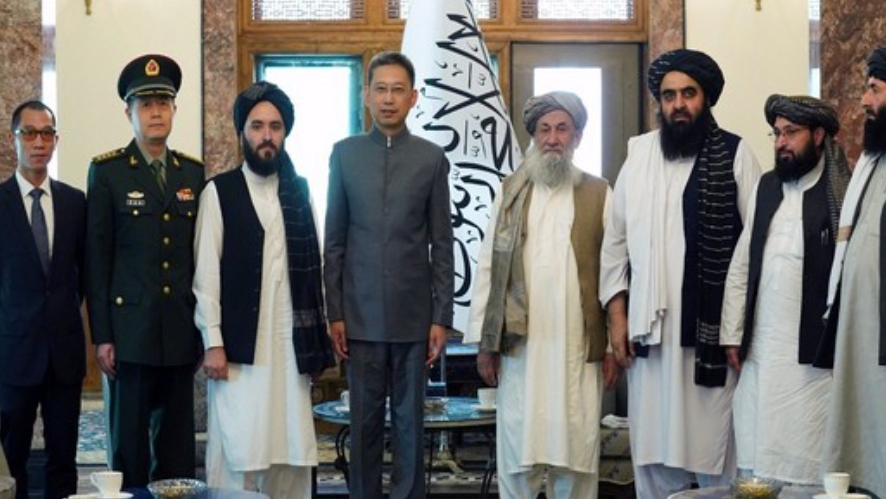US-China chip war is India’s opportunity
- SIS Blog

- Oct 10, 2023
- 3 min read

By Prof. Srikanth Kondapalli
Inscrutable China
The US-China technology Cold War and China’s quest to expand indigenous capacity and self-reliance, as the US denies seeks to deny China hi-tech components for military use, are all shaping recent dynamics.
The US restrictions on semiconductor components and technologies to China is a gathering storm, with retaliation and counter-retaliation measures spilling over into the supply chains and geopolitics.
The ominous signals of the US restrictions on China are visible of late. It began with the Trump administration’s tariffs on China’s exports. A second sign was the semiconductor export controls imposed by the US in April 2018 on China’s telecom giant ZTE (Zhongxing) for repeatedly violating US laws on exports to Iran.
A third sign was the arrest of Meng Wanzhou, the daughter of Huawei chief Ren Zhengfei. Meng was taken into custody by Canadian authorities at the behest of the US, for her alleged links to Iran. China retaliated by arresting two Canadian citizens not linked to this episode. Meng was finally released in a “hostage swap” deal, only for it to intensify the semiconductor war.
The US restrictions are expected to constrain China’s expansion programmes, specifically in AI-enabled military applications, but also trigger intensive indigenous efforts. China’s vulnerability is reflected in the fact that it imports half of global chip sales, estimated at about $500 billion.
China undertook two countermeasures. It retaliated by banning export of germanium and gallium to the US, essential for the production of semiconductors. Beijing also took the complaint to WTO. Previously, China banned the export of rare earth metals to Japan citing historical issues between the two countries. In another measure, it began subsidising domestic IT industry with more than $150 billion.
China had assiduously built its domestic industry under Party-State dominance and priorities. Yangtze Memory Technologies Corp, Semiconductor Manufacturing International Corporation, HuaHong and other companies have expanded substantially in enhancing semiconductor capacity. However, despite many successes, the industry is wracked by its dependence on State subsidies, lack of R&D investments, rampant corruption, and being copycats.
The Chinese countermeasures appear to be counterproductive. While China put up a brave face by announcing a 7-nanometer chip (compared to its predominantly 24-nm capability) and Huawei released the 5G-capable Mate-60 Pro. But this appears to be for demonstrative effect. The US, Taiwan and South Korean companies produce 3- and 4-nm chips already.
In March this year, the US cobbled up a multilateral pact with Japan and Netherlands to stop chip-making technology from going to China. Beijing has been assiduously pursuing measures to acquire such technologies from the US and Netherlands.

With ambitions of becoming a “digital superpower” and sourcing 70% of integrated circuits and other parts through the ‘Made in China 2025’ campaign launched in 2015, China wanted to seize the opportunity but with initial US support. That dream has become an uphill task now. Beijing seems to have opened its cards too early, especially at a time when it is still recovering from the Covid pandemic, with declining economic growth and restrictions on its own big businesses.
China had imposed restrictions on the US company Micron and even arrested its employees last year on espionage charges. Many US tech companies are toying with the idea of relocating from China to other green pastures in Southeast Asia and India.
These technology and geopolitical issues occur alongside China’s threat to invade Taiwan, the major semiconductor exporter in the world today. Taiwan invasion scenarios have created tensions in the US and Taiwan and brought back options of relocating the semi-conductor industry to other markets. Taiwan’s TSMC has agreed to open a plant in Arizona and explore other markets.
Despite public postures of openness, transparency, WTO-compliance and level-playing field, China is a highly restricted market for the US, European, Japanese or even Indian products. For instance, none of the Indian software products are allowed in China’s State-owned enterprises, not to mention extensive restrictions and firewalls embedded in China’s IT platforms.
The US-China semiconductor war could be an opportunity for India in terms of relocation of the global industry in a phased manner, upgradation of India’s capacities, and supply chain reorganisation. Already, Micron, which was victimised in China, is setting up a testing and packaging centre in Gujarat, with over $830 million in investments. Taiwan’s TSMC and Foxconn companies are actively in talks or have established their presence in the semiconductor industry in India.
Originally Published : Deccan Herald, 8th October' 2023
Posted in SIS Blog with the Authorisation of the Author.
Prof. Srikanth Kondapalli is Dean of School of International Studies, Jawaharlal Nehru University, New Delhi, India







